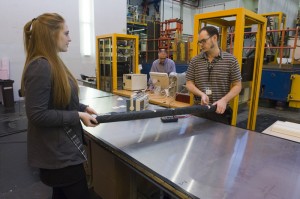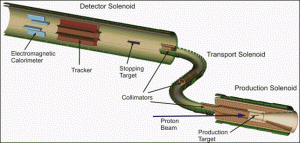DOE Gives Big Boost to Fermilab’s Plans for New MUON Experiment
The group has focused its energies on planning an experiment that creates a plenitude of muons and could reveal new phenomena that could only result from unknown physics.
That narrow focus, say the members of the Muon-to-Electron-Conversion experiment, will allow the Mu2e collaboration to indirectly search for new particles and let them look for signs of new types of interactions at energies up to 10,000 trillion electronvolts, far beyond the LHC’s grasp. It also would help scientists to better understand future LHC discoveries.
Mu2e got a big boost on November 24 with the US Department of Energy endorsement of the scientific need for the project, called Critical Decision-0. This marks the first stage of DOE’s 4-stage approval process that projects must pass before construction can start.
DOE approval makes Mu2e the only US-based charged-lepton flavor violation experiment. Similar experiments are proposed in Japan: Coherent Muon to Electron Transition, COMET, a neutrino-less conversion of muons to electrons and its follow up experiment PRISM Muon to Electron Conversion experiment, PRIME, which uses a different design than Mu2e, and the complementary MEG experiment at the Paul Scherrer Institute in Switzerland that searches for muon decaying into elections and photons.
Italy has primary responsibility for designing, building, and commissioning the calorimeter.
Collaborators are currently working on tracker and magnet prototypes and detailed simulations that should be complete by the summer. This should allow the project to proceed to CD-1 by the spring of 2011 and operation in 2017.

From left: Amy Allen, Doug Glenzinski,
and Craig Group work on the Mu2e experiment test stand at Fermilab.
Mu2e just passed the first DOE approval stage. Photo Courtesy of Fermilab.

Potential design of Mu2e. Courtesy Fermilab.
Source: Symmetry Magazine Website